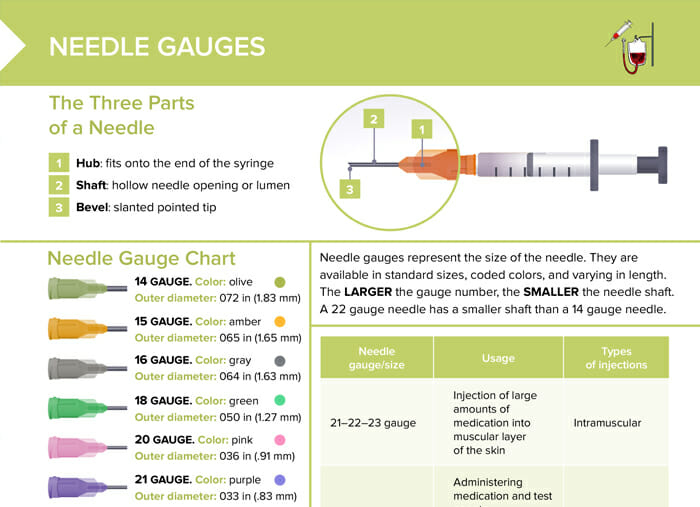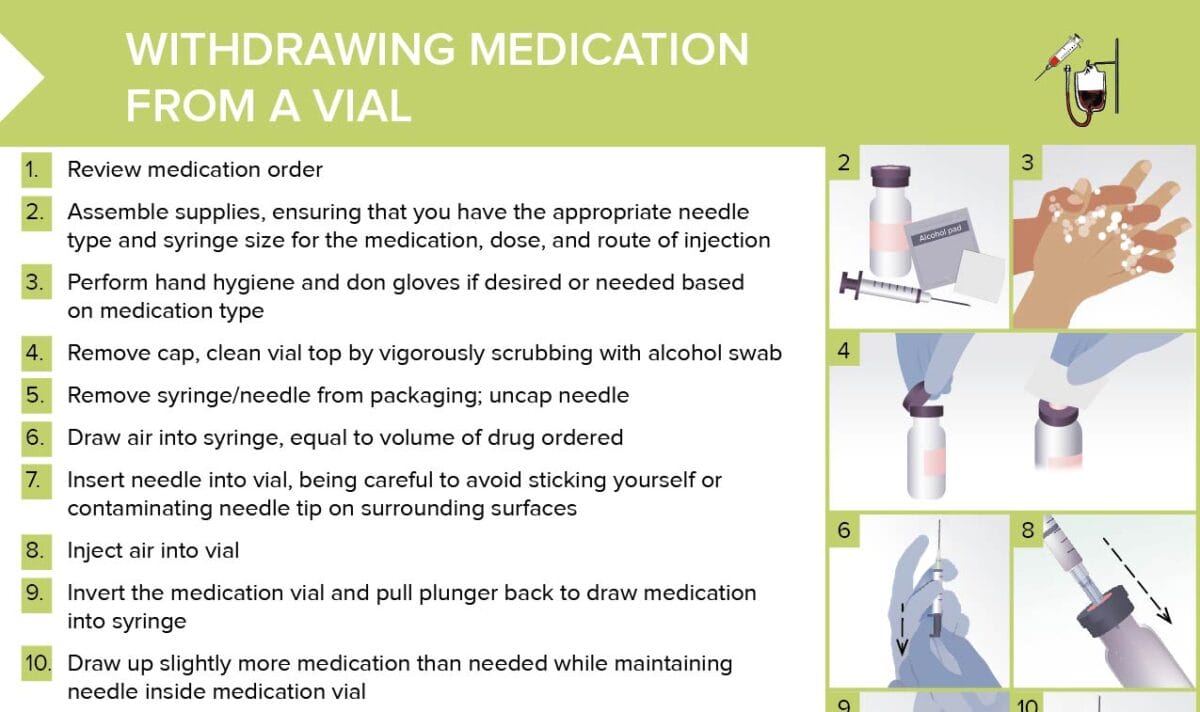How to fill a syringe from a vial
Steps
- Review medication order
- Assemble supplies, ensuring that you have the appropriate needle type and syringe size for the medication, dose, and route of injection
- Perform hand hygiene and don gloves if desired or needed based on medication type
- Remove cap, clean vial top by vigorously scrubbing with alcohol swab
- Remove syringe/needle from packaging; uncap needle
- Draw air into syringe, equal to volume of drug ordered
- Insert needle into vial, being careful to avoid sticking yourself or contaminating needle tip on surrounding surfaces
- Inject air into vial
- Invert the medication vial and pull plunger back to draw medication into syringe
- Draw up slightly more medication than needed while maintaining needle inside medication vial
- Review syringe for air bubbles; tap until air bubbles collect at top of syringe
- Slowly press plunger, injecting excess medication and any air bubbles present back into the vial until arriving at the ordered dose marker on syringe
- Remove needle from vial
- Recap needle using one-handed scoop method
One-handed scoop method for recapping an injection needle
- Place cap on table
- Hold syringe in one hand and place needle inside cap, while being careful not to contaminate the needle by touching table or other non-sterile surface
- Scoop cap onto needle while lifting syringe into a vertical position
- With your free hand, carefully grasp the sides of the cap, below the level of the needle tip, and click cap into place to securely cover needle
How to read a syringe
Reading a syringe correctly is crucial for accurate medication dosage. Here’s how to read a syringe accurately:
- Identify the type of syringe (scale depends on type): insulin, tuberculin, standard
- Check the unit measurements along the side of the syringe and compare to the dosage information: determine if measured in mL, cc, units – for insulin dosage
- Determine dose needed by looking for the corresponding marking on the syringe; calculate, if necessary.
- Hold the syringe at eye level when drawing the medication to see the level of the liquid against the markings accurately.
- The liquid will form a curve in the syringe, known as the meniscus. Read the measurement at the lowest point of the meniscus (the bottom of the curve) to get the correct dose.
- Make sure the top ring of the plunger is exactly on the line for your dose, not the bottom edge or somewhere in the middle.
- Especially with high-alert or very precise medications, have another healthcare professional double-check the dosage.

